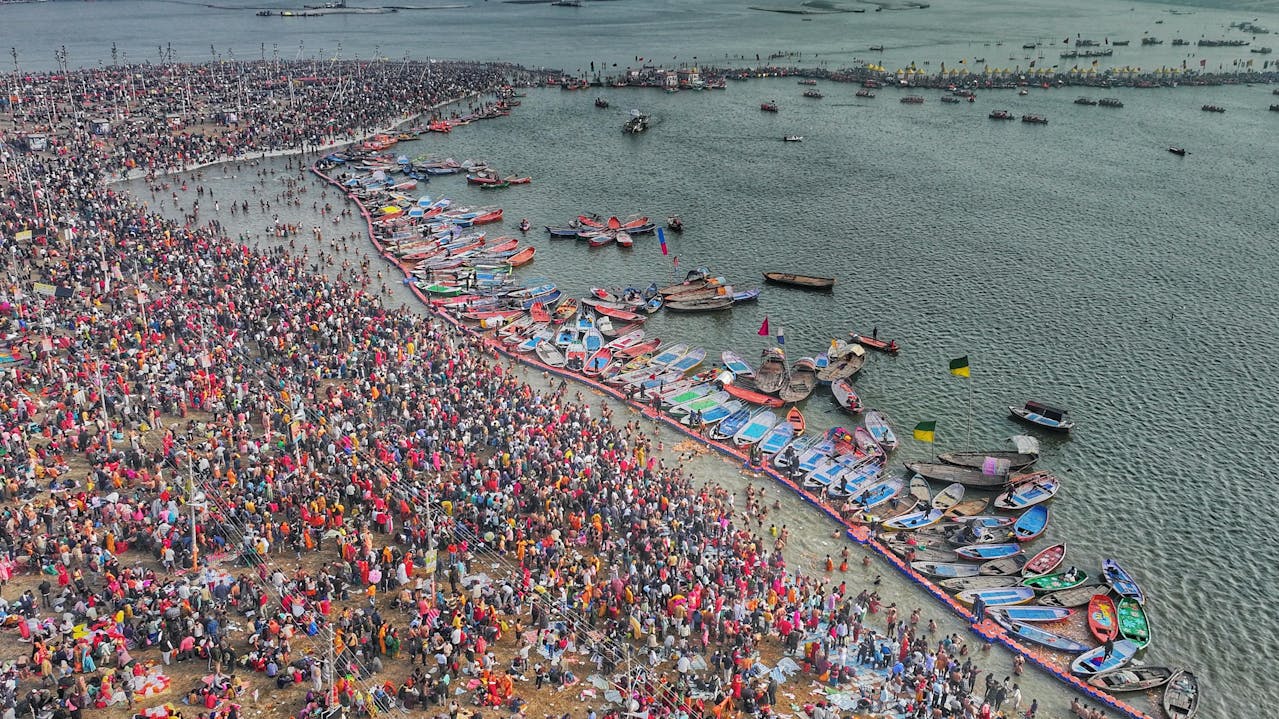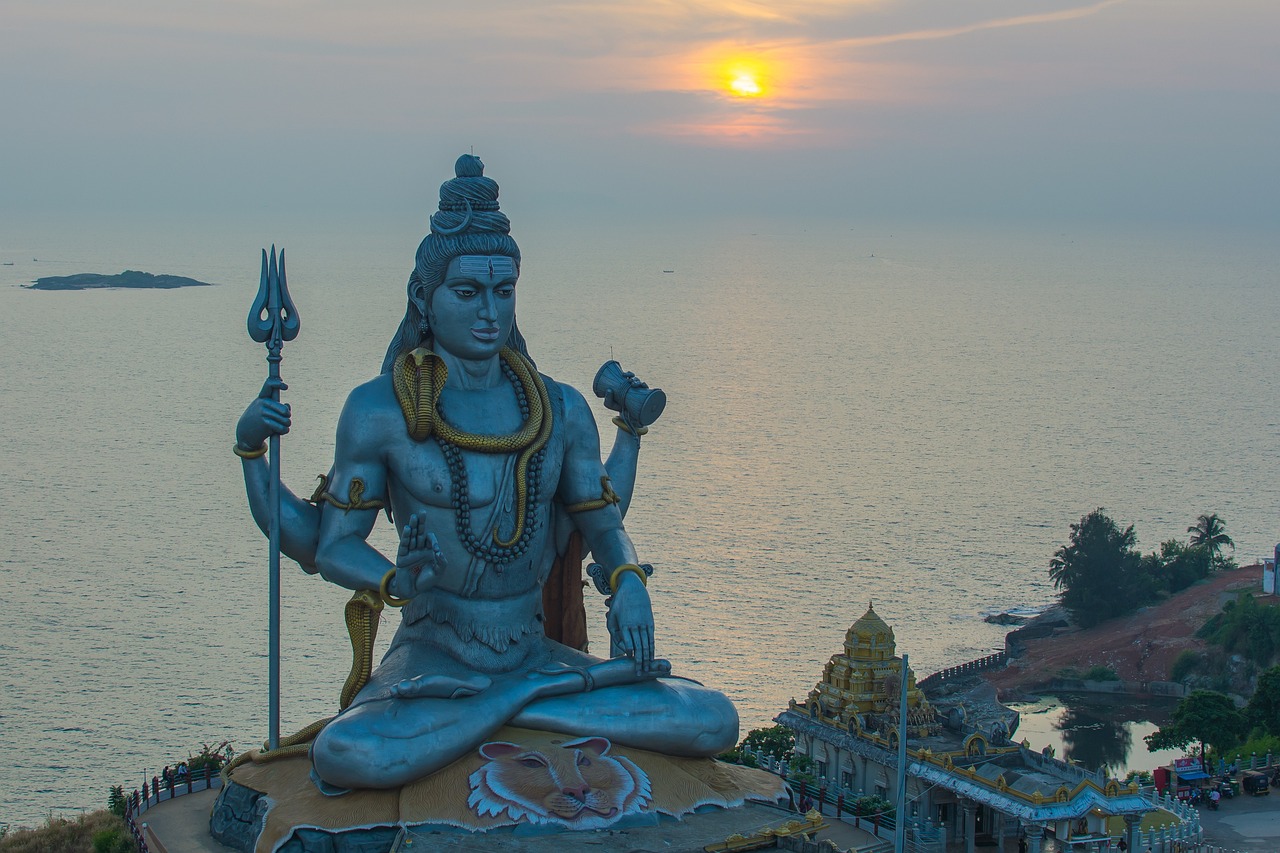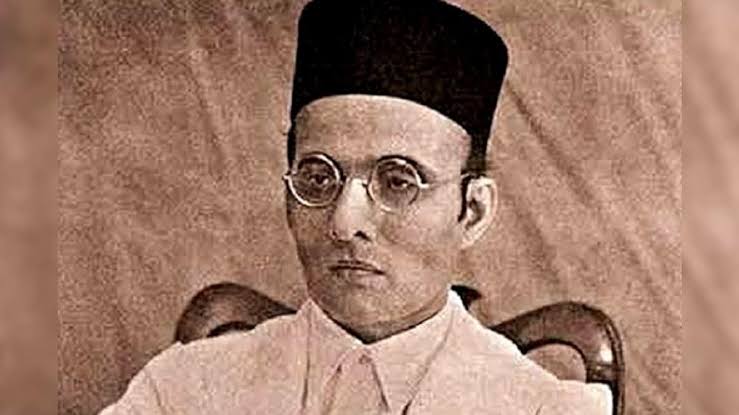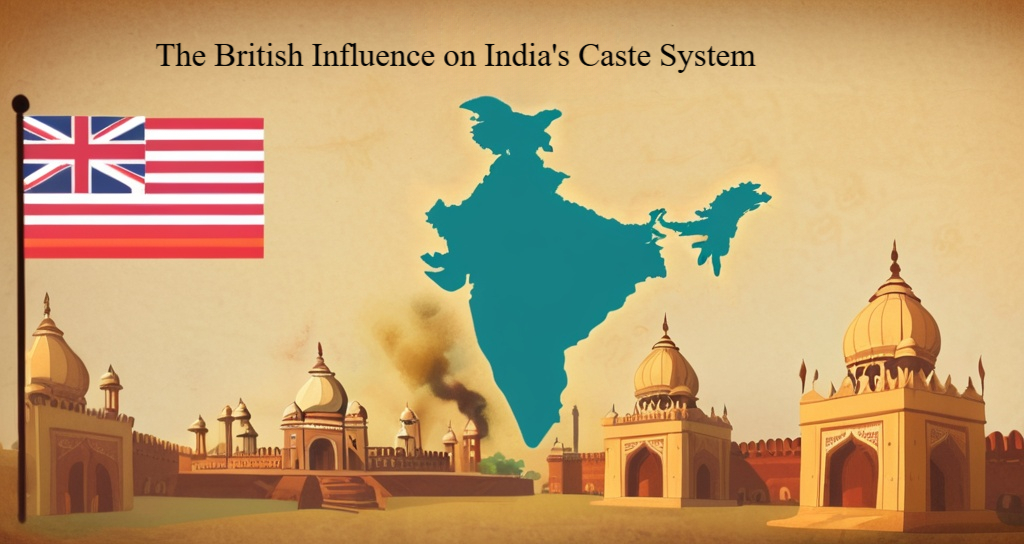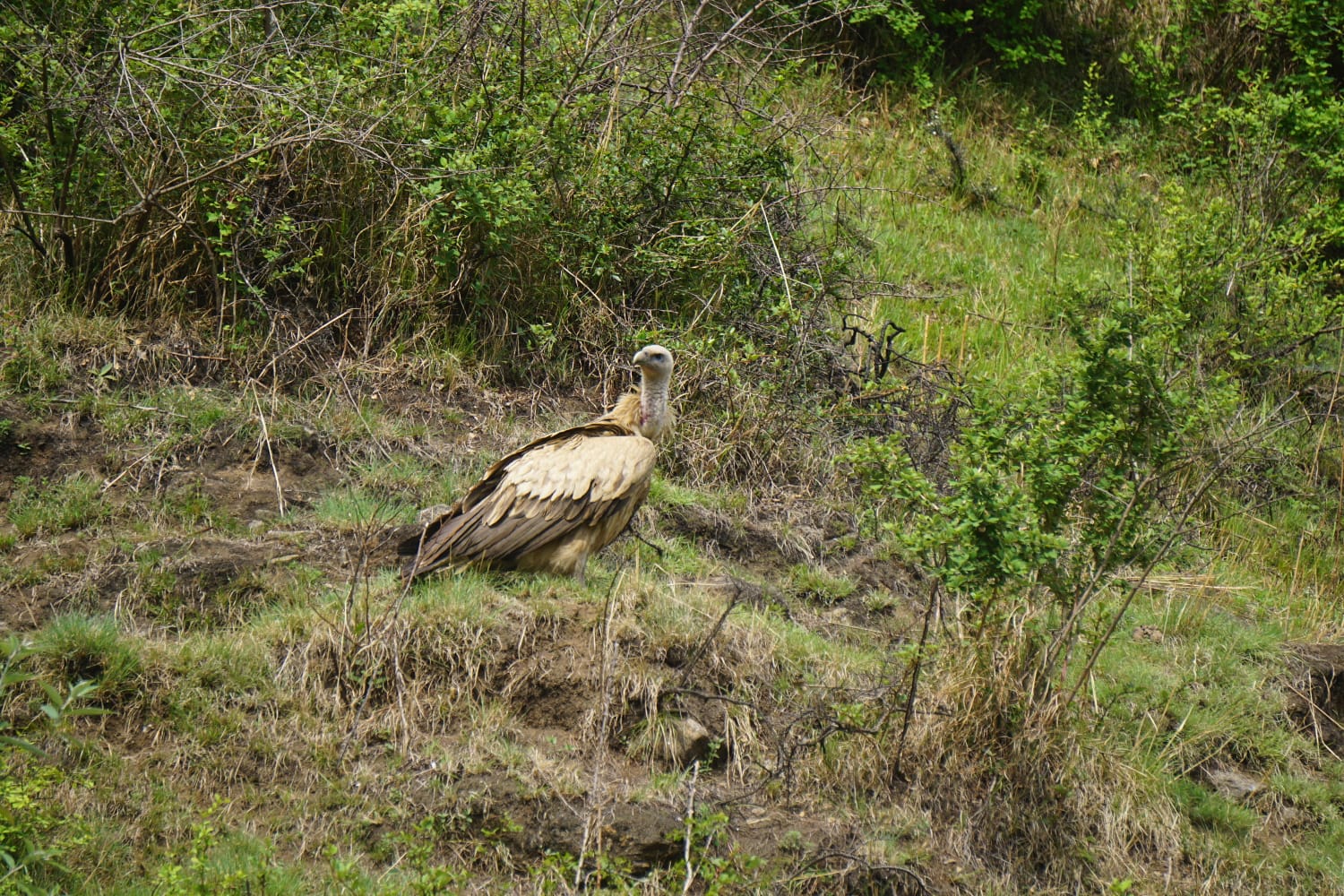Kumbh Mela, an important Hindu pilgrimage, is celebrated approximately every 6, 12 and 144 years. It is related to the partial or full revolution of Jupiter and is said to represent the largest human gathering in the world at any given time for a duration of 1 month.
Origin of Kumbh
It’s a month-long festival in Hindu Dharma and is traditionally linked to the 8th-century, where it is said that Adi Shankarachaarya, (who is considered one of the most influential personalities in the history of Indian philosophy) initiated it to start Hindu gatherings for philosophical discussions and debates along with Hindu Math (places where saints live).
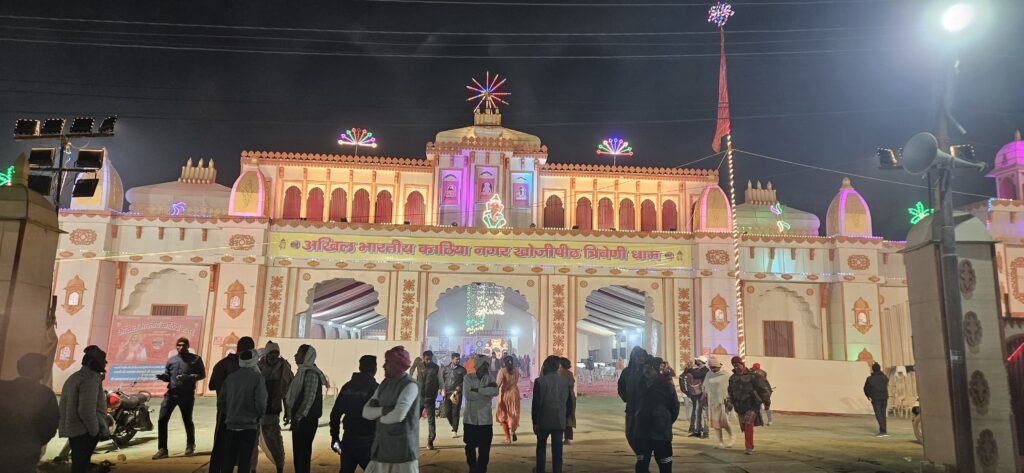
But, it is also believed that the origin of Kumbh goes way back to ‘Samudra Manthan’ or the churning of the cosmic ocean. There was a fight between ‘The Devtas’ and ‘The Daityas’ for the Amrut (nectar).
During this event, drops of the nectar of immortality (amrut) fell at four locations: Prayagraj, Haridwar, Nashik, and Ujjain.
These places became sacred, and bathing in the rivers at these sites during the Kumbh Mela is believed to cleanse one’s sins and lead to moksha (liberation)
The Kumbh Mela is classified as:
- The Ardh Kumbh Mela (“half Kumbh”) occurs approximately every 6 years between the two Purna Kumbha Melas.
- The Purna Kumbh Mela (sometimes just called Kumbh or “full Kumbha”), occurs every 12 years at Prayagraj, Haridwar, Nashik or Ujjain.
- The Maha Kumbh, which occurs every 12 Purna Kumbh Melas i.e. after every 144 years
How It Is Celebrated
The Kumbh Mela is celebrated with great fervour and devotion. The main ritual involves taking a holy dip in the sacred rivers at the designated sites.
People believe that bathing in the sacred waters during this time washes away their and their ancestor’s sins and brings moksha.
The festival also features various religious activities, including:
Shahi Snan (Royal Bath):
The Shahi Snan are magnificent, the mystique surrounding the Naga Sadhus, the Akadha, cultural performances, and the ancient traditions and practices come alive during this time and all of these make the Kumbh unquestionably unparalleled.
The ritualistic act of bathing (on specific days) in the sacred waters, called the Shahi Snan, is cleansing the body and freeing the soul from the cycle of birth and death
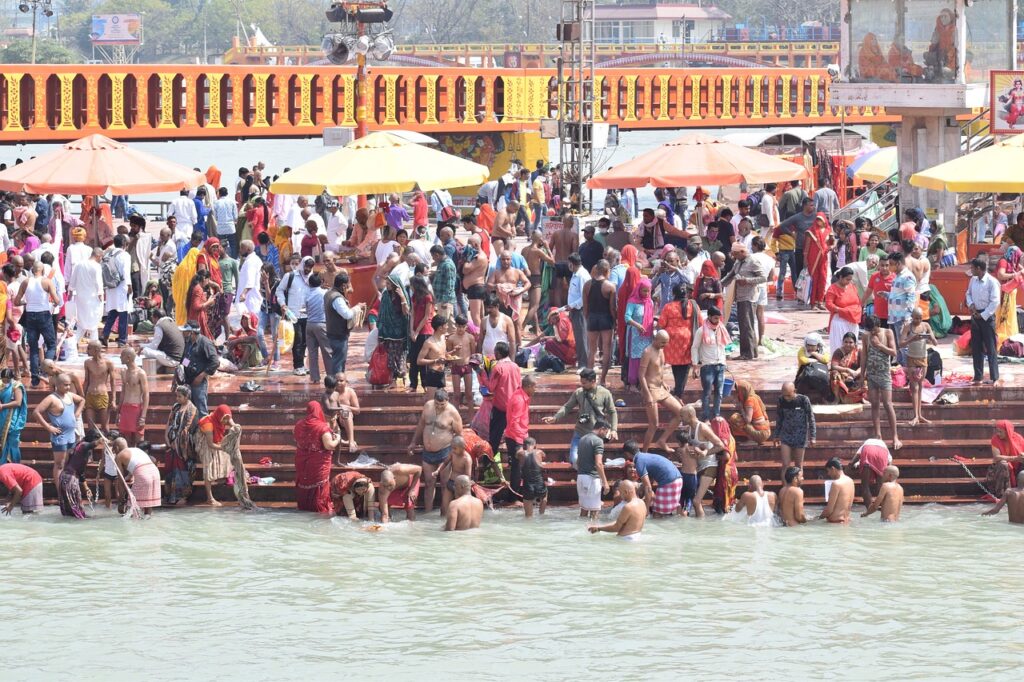
Processions:
Colourful and grand processions led by different akharas (sects of sadhus) showcasing their unique traditions and rituals.
Spiritual Discourses and Bhajans:
Religious leaders and scholars deliver sermons and lead devotional singing sessions.
Yogasanas and Meditation:
Yoga and meditation sessions are conducted to promote physical and spiritual well-being
Cultural Performances:
Traditional music, dance, and drama performances that reflect the rich cultural heritage of India
Let’s understand the integral component of the Kumbh – Akhara
The akharas constitute the sect of sadhus or can be named as spiritual Brotherhood, each with its own traditions, philosophies, and rituals.
They prepare their members to defend the 𝙁𝘼𝙄𝙏𝙃 both intellectually and physically
Akhara plays a significant role in the Kumbh Mela, showcasing their unique identities through a vibrant procession called ‘Peshwai’ Or ‘Chavni Pravesh’, where they come on horses, camel, elephant, and chariots in shining armour and chanting and beating the traditional instruments, which are a visual feast, attracting large crowds of spectators.

The Naga Akharas, fierce followers of Lord Shiva, are believed to possess immense spiritual power. They receive unparalleled attention and play a prominent role in the festival, they lead the processions.
They are renowned for their stern lifestyle, minimal or no clothing, and dramatic appearance, covered with ash and carrying swords, tridents and other weapons. The Naga Akharas add a raw, untamed energy to Kumbh.
It is a time for spiritual renewal, self-purification, and seeking blessings.
2025 Maha Kumbh Mela
The Maha Kumbh has already begun with the First Snan on 13th January and it will conclude on February 26. It is being held in Prayagraj, a city in the state of Uttar Pradesh, Bharat.
Millions of people have travelled from different parts of the world to attend the largest religious gathering.
In less than a week, more than 70 million people have taken a dip in the Triveni river.
𝓓𝓲𝓭 𝔂𝓸𝓾 𝓴𝓷𝓸𝔀 𝔀𝓱𝔂 𝓽𝓱𝓲𝓼 𝔂𝓮𝓪𝓻 𝓲𝓼 𝓼𝓸 𝓼𝓹𝓮𝓬𝓲𝓪𝓵?
Maha Kumbh mela is being celebrated after the completion of 12 Kumbh mela cycles , which occurs after 144 long years.
This in actual terms is not even ‘once a lifetime opportunity’.
This explains why Maha Kumbh Mela 2025 is considered highly sacred and why people from different parts of the globe are eager to take a holy dip at Sangam ( Ganga Yamuna Saraswati)
Believe it or not, Hindu Dharma has an explanation for every belief scientifically. So many of our festivals and rituals are based on the planet and solar system, their movement and influence on the earth.
It’s interesting to note that after 144 years, The Sun, Moon, Jupiter and Saturn are in line. Besides, Amavasya is on January 29 and three days before it, ‘Pukh (or Pushya) Nakshatra’ will also align with these four planets. This is what makes Maha Kumbh 2025 remarkable..

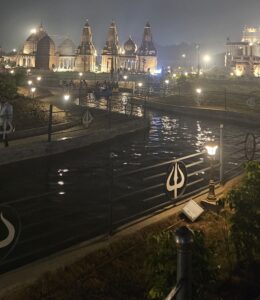

Sadhus, Astrologers, Yog guru , Science enthusiast, technology experts, actors, models, politicians, travellers, photographers, journalists, and believers globally come to the Kumbh Mela for their own reason but in back of the mind holding the spiritual liberation as their primary reason.
The Maha Kumbh Mela 2025 features several key bathing dates, known as Shahi Snans, as discussed above, which are considered the most auspicious times for taking a holy dip. These dates include:
- January 13: Paush Purnima Snan
- January 15: Makar Sankranti Snan
- January 29: Mauni Amavasya Snan (Royal Bath)
- February 3: Basant Panchami Snan (Royal Bath)
- February 12: Maghi Purnima Snan
- February 26: Maha Shivratri Snan (Concluding Day)
Many travellers are drawn to the traditional performances and cuisines, and the chance to immerse themselves in vibrant Indian culture.
Some consider it a unique opportunity to encounter Sadhus with stern lifestyles, offering a glimpse into ancient spiritual traditions
It is a profoundly spiritual experience for many international travellers.
The 2025 Maha Kumbh Mela is not just a religious gathering; it is a celebration of India’s rich cultural heritage, unity, and spirituality. It offers a unique opportunity for devotees and visitors to immerse themselves in the vibrant traditions and practices of Hinduism, making it a truly transformative experience.
Do you also want to participate in the Maha Kumbh? Yes ??? Great. Let’s find how to reach Kumbh.
How to reach Maha Kumbh Mela
It is organized across the Triveni Sangam in Prayagraj city.
The nearest airport is Prayagraj Airport (40 mins), with regular flights from Mumbai, Delhi, Bengaluru, and Kolkata.
For international travellers, the main international airports are Delhi and Varanasi.
The nearest railway station is Prayagraj Junction (15 mins).
Indian railways is operating 13,000 including 3000 special trains to cater to the anticipated travel surge.
The city will not let anyone sleep hungry, there are thousands of associations which are facilitating camps with places to stay and food to eat.
Conclusion
The Kumbh Mela is a testament to the enduring power of faith, tradition, and the human spirit. It brings together millions of people from diverse backgrounds, united in their quest for spiritual growth and enlightenment.
The 2025 Maha Kumbh Mela, with its rare celestial alignments and immense significance, stands as a beacon of hope, renewal, and divine blessings for all who partake in its sacred rituals.
You might find reading about the Jagannath Puri temple quite interesting too.

About the Author – Shilpi Srivastava
Shilpi moved to Manchester from Pune, India two years ago. She works for Finnish IT company.
In her free time she loves writting poem and short stories and volunteers at the different non profit organizations.
She is fond of travelling and trying different cuisines.
If you have enjoyed reading this article please share it with your family and friends.
Also do comment below your feedback on this article. We read each and every comment. If you want to share your views via email do not hesitate to email us at saffronlegacy01@gmail.com

